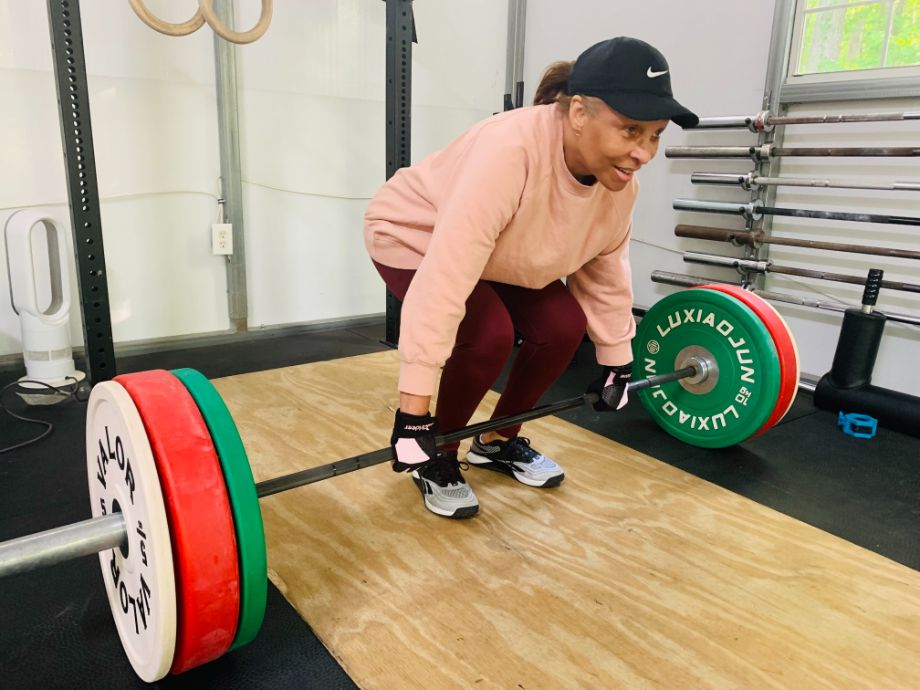We test and review fitness products based on an independent, multi-point methodology. If you use our links to purchase something, we may earn a commission. Read our disclosures.
I’m a certified personal trainer and have worked with many folks over the age of 50. While cardiovascular exercise is important, when I work with clients in this age group, the main focus is resistance training to increase muscle strength and bone health.
It’s important to prioritize resistance training because as you age muscle mass1 and bone density2 naturally decline. Strength training for women over 50 is especially important because people who experience menopause are more prone to osteoporosis, a condition that fragments bone density and leaves bones spongy and brittle.
In this guide to strength training over the age 50, I’ll walk you through the benefits and my top recommendations for muscle-building exercises.
RELATED: Benefits of Strength Training
Benefits of Strength Training for Women Over 50
There are many reasons why all older adults should build muscle through strength training—it’s not limited to cis women. Here are some reasons why you might want to consider lifting weights, according to the CDC3:
- Bone density: Resistance training and load-bearing exercise places strain on the skeletal system, which can help maintain bone density in addition to stimulating growth of new bone minerals.
- Increase muscle mass: Lifting weights on a regular basis can increase your overall body strength making daily activities feel easier with more core strength, improved balance, and stability.
- Heart health: Strength training stimulates a healthy heart and can lower blood pressure in addition to reducing the risk of heart disease, stroke, and Type 2 diabetes.
- Mental health benefits: Physical activity can help improve sleep and reduce feelings of anxiety.
- Maintain healthy weight: Weight training can help build lean muscle mass and help with weight loss or maintaining a body weight healthy for you.
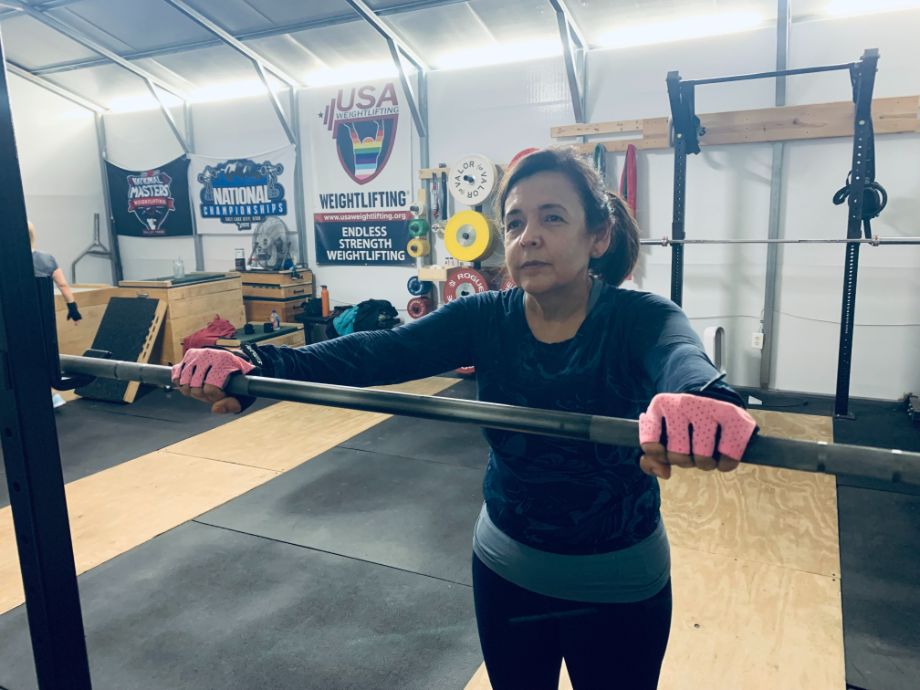
Strength Training for Women Over 50
This guide is not an all-encompassing list of exercises for older adults. Instead, you can use this guide of 10 exercises as a way to build a full-body workout that suits you.
If you’re looking for a more in-depth strength training program, check out our 6-week beginner workout plan which features a downloadable PDF. For now, here’s what you can expect in this guide:
- Goblet squat
- Reverse lunge
- Single-leg glute bridge
- Hip flexor
- Bird dog
- Superman
- Single-arm shoulder press
- Band pull-apart
- Kneeling push-up
- Farmer’s carry
Goblet Squat
Why do it: Goblet squats are my go-to exercise for older adults. This movement not only strengthens your lower body but helps mimic daily activity like standing up from a seated position or picking up your kids or grandchildren.
How to do it:
- Start by holding a single dumbbell or kettlebell at chest height; stand with your feet hip-width apart.
- Begin the squat by bracing your core and keeping your back straight. From there, start to lower your hips by pushing your knees outward and butt back.
- Lower until your quads are parallel with the floor.
- At the bottom of the squat, drive force into the floor and flex through your legs (core still braced) to stand back up.
- Repeat for reps.
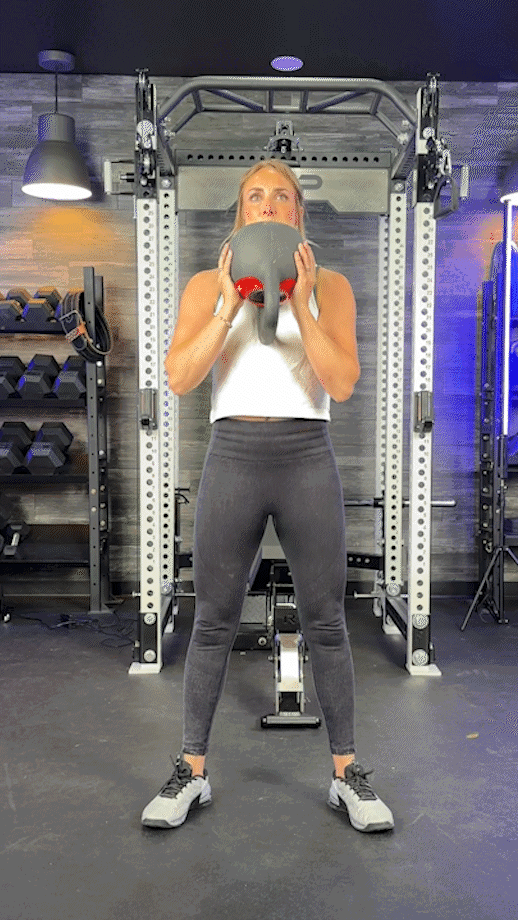
RELATED: Best Squat Variations
Reverse Lunge
Why do it: Reverse lunges not only target the lower body like a squat, but they also help you practice your balance by stabilizing your body weight on one leg at a time, which is essential for older adults.
How to do it:
- Stand with your feet shoulder-width apart. Lunges can be performed with or without weight.
- With your right foot stable, step backward onto the ball of your left foot and bend your left knee as you lower down toward the ground.
- Keep your chest upright as you lower down to full range of motion, when your back leg makes a 90-degree angle.
- Drive force into your right foot to stand up and bring your left leg back to the starting position.
- You have the choice to alternate legs or perform all reps on one side before moving to the other side.
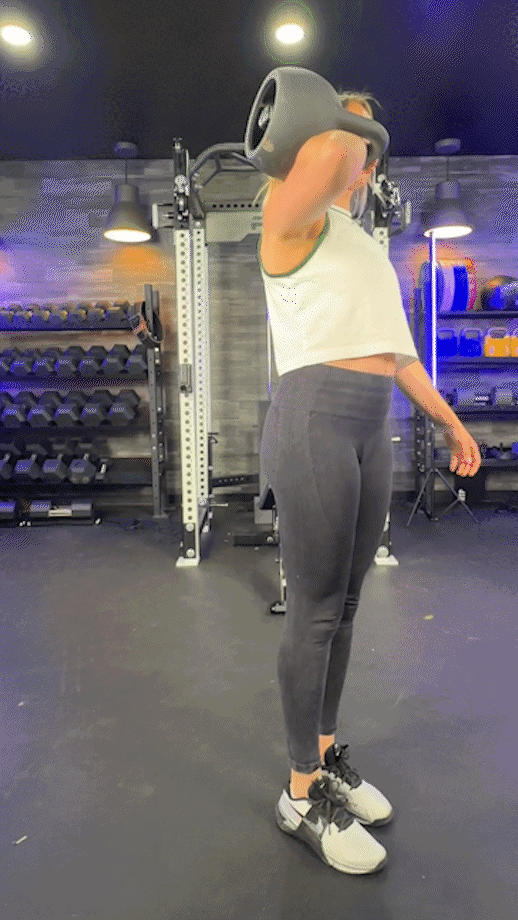
RELATED: What Muscles to Lunges Work?
Single-Leg Glute Bridge
Why do it: From my experience as a CPT, most folks can benefit from stronger glutes. We humans tend to do a lot of sitting and glute bridges are a low-impact way to increase blood flow and develop the strength of your backside.
How to do it:
- Lie face up on the floor with your knees bent and feet flat on the floor.
- Lift your left leg off the floor and straighten your leg so your heel is facing the ceiling.
- Brace your core and press into your right foot to stimulate the muscles of your hamstrings and glutes and lift your lower back and glutes off the floor.
- To maintain proper form, keep your core braced and back flat (not arched).
- Lower your glutes down slowly and perform all repetitions on your left leg before switching to your right leg.
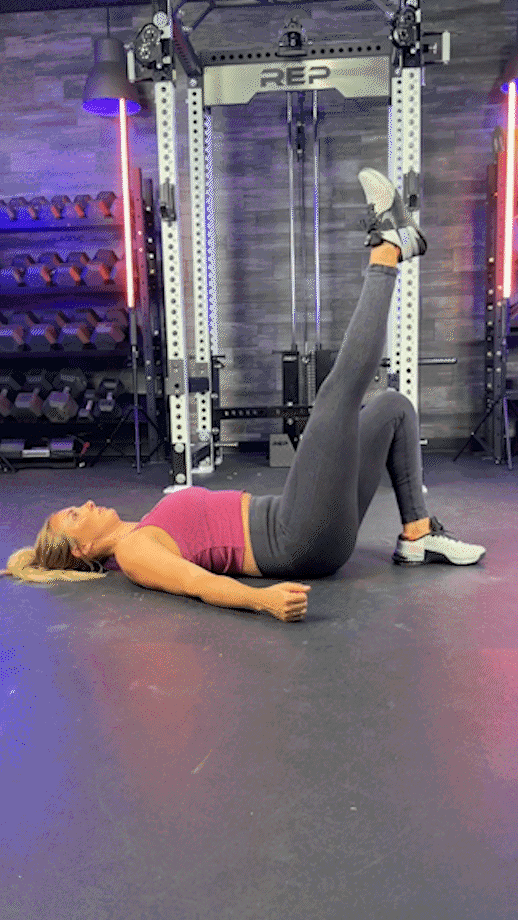
RELATED: Best Glute Exercises at Home
Banded Hip Flexor March
Why do it: Strengthening your hip flexors is essential for proper hip function, especially for hinging movements. The ability to hinge is not just good for deadlifts, it’s essential for picking up things off the floor, squatting down in your garden, or simply reaching for something in front of you.
How to do it:
- Place a mini-loop resistance band around both feet.
- With your feet hip-width apart, lift your right leg up so that your quad is parallel to the floor and your foot is flexed.
- Hold this position and muscle contraction through your legs for 1 second before slowly lowering your foot to the floor.
- Without too much shifting side-to-side, perform the next repetition on your left leg and keep alternating legs until the set is complete.
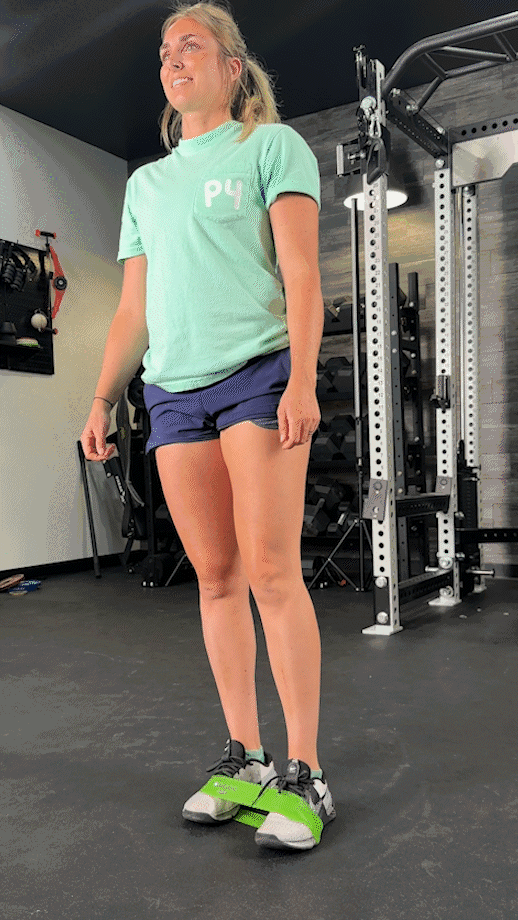
RELATED: Hip Flexor Exercises
Bird Dog
Why do it: The bird dog is great for older adults for several reasons: It’s low-impact, builds core strength, helps with balance, and can improve coordination. It’s a go-to core exercise for people of all ages.
How to do it:
- Start in the quadruped position (on your hands and knees), holding your back flat and core braced.
- Slowly lift your right leg and left arm off the floor and extend both limbs out straight until they are (mostly) parallel with the floor.
- Hold this position for 3 seconds by squeezing your glutes and shoulder blades while bracing your core.
- Lower both limbs to the floor at the same time and switch to your other side without swaying or moving through your torso. Repeat for reps.
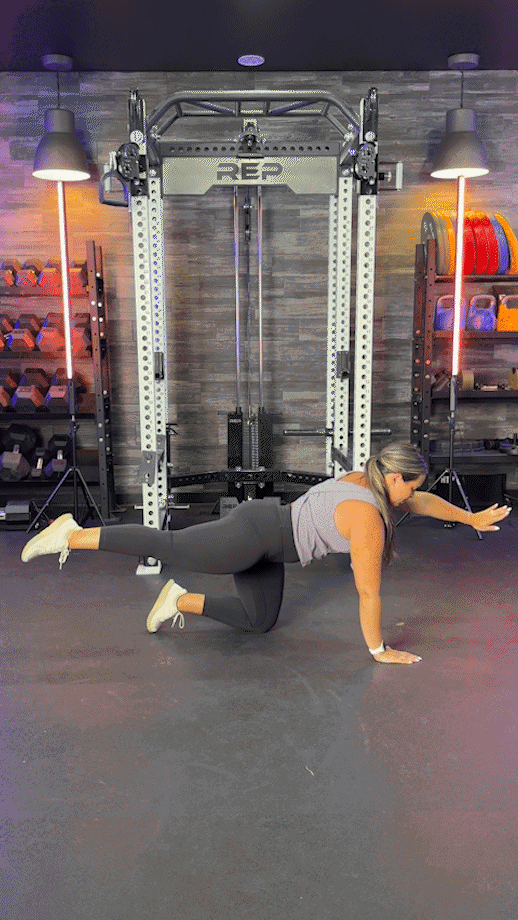
RELATED: Functional Core Exercises
Superman
Why do it: Supermans are accessible, don’t require any equipment, and help stimulate blood flow to your glutes and low back. It’s an excellent way for folks who experience back pain to strengthen these muscles with little to no impact.
How to do it:
- Start by lying on the floor on your stomach, with your arms and legs outstretched.
- Flex your glutes and upper back muscles to lift your arms, chest, and lower legs up while your pelvis and stomach remain on the floor.
- Hold your arms and legs off the ground for 3 seconds.
- Return your limbs slowly to the floor and repeat for repetitions.
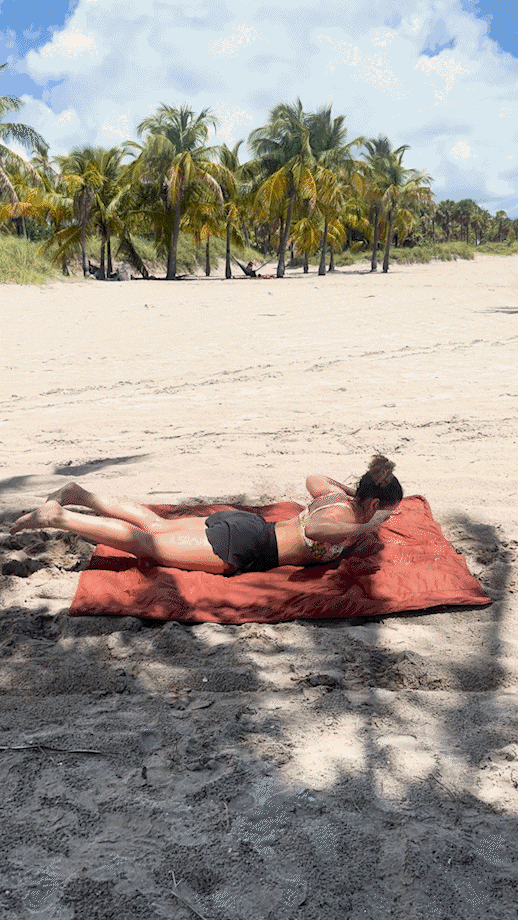
RELATED: Bodyweight Back Exercises
Single-Arm Overhead Press
Why do it: While a standing overhead press is an excellent choice for upper body strength, a single-arm overhead press challenges core strength and can help with muscle imbalances. It’s a win-win.
How to do it:
- Stand with your feet shoulder-width apart holding a dumbbell in your right hand.
- Bend your right arm and bring the dumbbell up to just above shoulder height with your palm facing toward you.
- Brace your core and press the dumbbell overhead until your right arm is fully extended.
- Hold the top position for 2 seconds. With a braced core, slowly lower the dumbbell back to the starting position and repeat for reps. Repeat with the other arm.
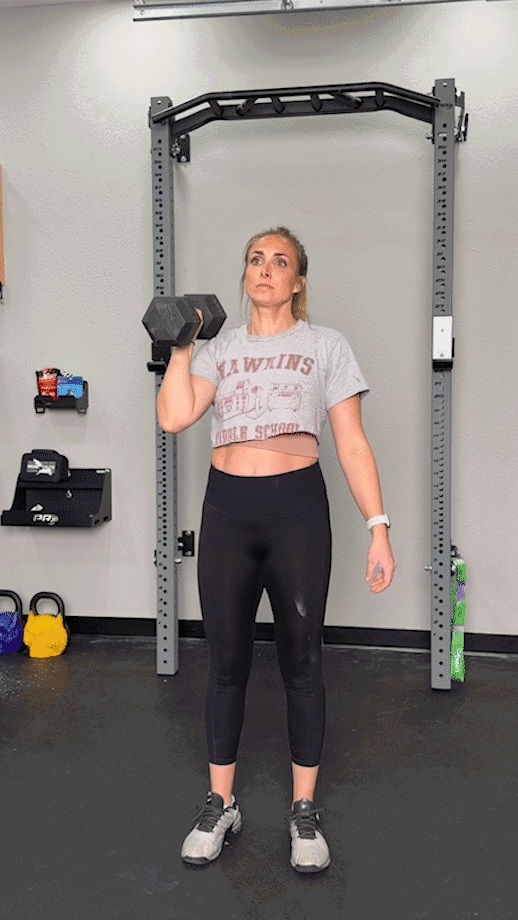
Band Pull Apart
Why do it: The band pull apart works the muscles of the upper body and helps older folks go through retraction and protraction of the scapula (aka your shoulder blades), which is essential for healthy shoulder function.
How to do it:
- Stand with your feet shoulder width apart and hold a long-loop resistance band in front of your chest with your arms fully extended.
- Without bending your arms, initiate the pulling motion of the band by squeezing your shoulder blades together.
- Pull on the resistance band until your arms are out to your sides and the band reaches your sternum.
- Slowly return to the starting position by releasing tension on the band, then repeat for reps.

RELATED: Resistance Band Exercises
Kneeling Push-Up
Why do it: A kneeling push-up is an excellent way for beginners and older adults to learn how to perform a push-up from a modified position while still strengthening the triceps and chest muscles.
How to do it:
- Start in a modified plank position: Arms straight, hands directly under your shoulders, core braced, and knees on the floor with your feet extended out behind.
- Slide your shoulder blades down away from your ears and tuck your elbows close to your ribcage.
- Bend your elbows and slowly lower your chest toward the ground as far as you can.
- Once you reach your max distance, straighten your arms and push yourself back up to the starting position, keeping your core braced. Repeat for reps.
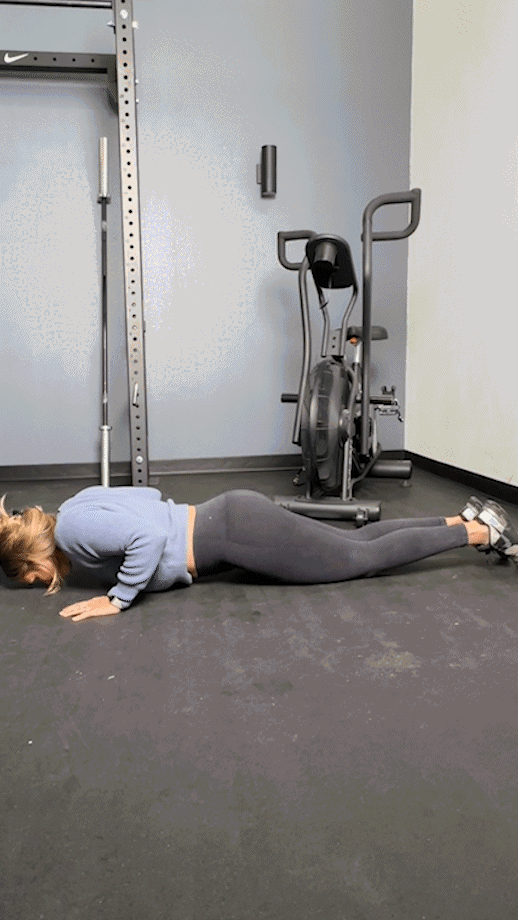
RELATED: 30-Day Beginner Push-Up Program
Farmer’s Carry
Why do it: The farmer’s carry is straightforward but is the ultimate total body exercise. It works your entire upper body including back, shoulders, biceps, and grip muscles. Plus, you’ll stimulate the muscles of your core and legs.
How to do it:
- Select a set of moderate-to-heavy dumbbells and use a braced core to stand up with a dumbbell in each hand, arms straight, and the dumbbells at your sides.
- While holding the weights in each hand, use your upper back muscles to pinch your shoulder blades down and back. Hold this position for the entire exercise.
- Begin the carry by walking in a straight line for a desired amount of time or distance.
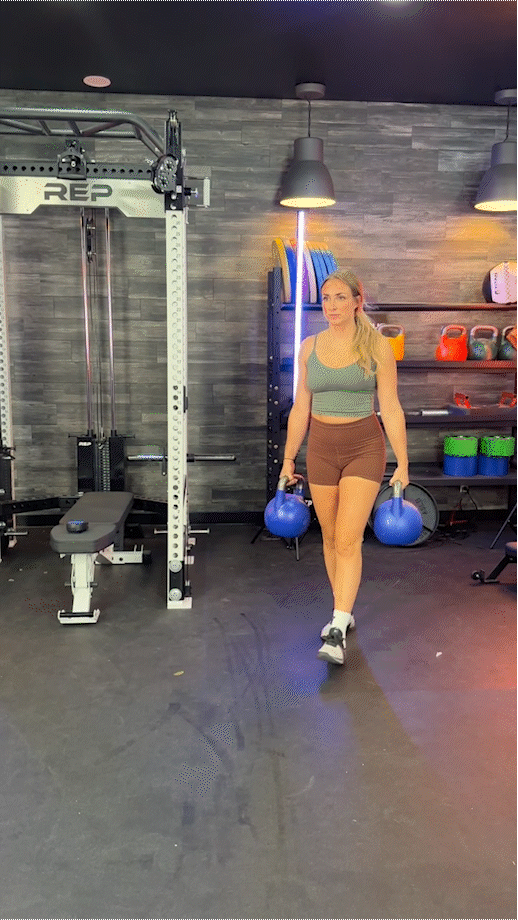
Strength Training for Women Over 50: Final Thoughts
Regardless of your gender, if you’re over the age of 50 you have so much to gain by starting a strength training routine. Strength training is an ideal option if you’re looking to:
- Potentially improve your heart health and reduce the risk of heart disease.
- Enhance your bone density and lower the risk of osteoporosis.
- Feel physically stronger for daily tasks and functions, not just in the gym.
We recommend consulting with your doctor before implementing a weight training program.
Strength Training for Women Over 50: FAQs
How much strength training should a 50 year old woman do?
In combination with the CDC4 recommendation for 150 minutes of moderate to vigorous aerobic exercise, the CDC3 also recommends older folks participate in at least two strength training sessions per week involving the major muscle groups.
What is the best exercise routine for a 50 year old woman?
The best exercise routine for folks over 50 years old is one that incorporates at least two days of strength training and 150 minutes of moderate to vigorous cardiovascular activity, per the CDC guidelines for physical activity in adults.
What is the best strength training for older women?
The best strength training movements for older people include functional strength movements that can be progressed and exercises that promote core strength, stability, and balance.
References
- Volpi, E., Nazemi, R., & Fujita, S. (2004). Muscle tissue changes with aging. Current Opinion in Clinical Nutrition and Metabolic Care, 7(4), 405–410. https://doi.org/10.1097/01.mco.0000134362.76653.b2
- Osteoporosis in Aging: Protect Your Bones with Exercise. News in Health. National Institutes of Health. 2015.
- Physical Activity Benefits for Adults 65 or Older. Center for Disease Control.
- Physical Activity for Adults: An Overview. Center for Disease Control.
Further reading

For our C4 Ultimate Pre-Workout review, we asked personal trainer, USAW-L2, and unofficial pre-workout expert Jacob Penner his opinion on this formidable product. Read more

I’m a certified personal trainer and have worked with many folks over the age of 50. While cardiovascular exercise is important, when I work with clients in this age group, the main focus is resistance training to increase muscle strength and bone health. It’s important to prioritize resistance training because as you age muscle mass1 and bone density2 naturally decline. Strength training for women over 50 is especially important because people who experience menopause are more prone to osteoporosis, » Read more about: Strength Training for Women Over 50: Why It’s Important and What to Do » Read more

ProForm has been making a variety of popular fitness equipment for years. Find out more about one discontinued model with this ProForm Endurance 520 E Elliptical review. Read more

Looking for a treadmill walking workout to follow? We’ve got three options here written by a certified personal trainer. Read more

